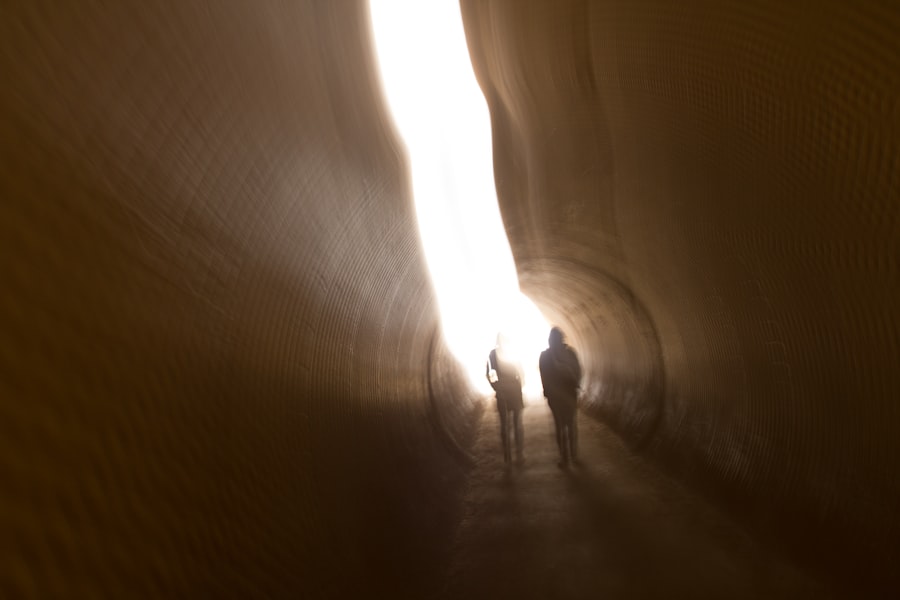The Drake Passage, a body of water situated between the southern tip of South America and Antarctica, is renowned for its tumultuous seas and unpredictable weather. This narrow stretch of ocean, measuring approximately 800 kilometers (500 miles) wide, serves as a critical conduit for maritime traffic between the Atlantic and Pacific Oceans. Its strategic location not only makes it a vital route for shipping but also a significant area for scientific research and ecological studies.
The passage is often characterized by its rough waters, which are a result of the confluence of various ocean currents, including the Antarctic Circumpolar Current. This unique hydrological phenomenon contributes to the passage’s reputation as one of the most challenging maritime routes in the world.
It has long captured the imagination of explorers, scientists, and sailors alike. The passage is often viewed as a gateway to the Antarctic, offering access to one of the last great frontiers on Earth. Its waters are teeming with marine life, including whales, seals, and a variety of seabirds, making it an area of immense ecological importance.
As such, the Drake Passage stands as a testament to the power and beauty of nature, while also serving as a reminder of the challenges that come with navigating its unpredictable waters.
Key Takeaways
- The Drake Passage is a body of water between South America’s Cape Horn and the South Shetland Islands of Antarctica, known for its challenging maritime conditions.
- Early explorers such as Sir Francis Drake and Ferdinand Magellan played significant roles in the exploration and mapping of the Drake Passage.
- The Drake Passage was named after Sir Francis Drake, an English explorer, and naval captain, although there is controversy surrounding whether he actually sailed through the passage.
- Some alternative names for the Drake Passage include Mar de Hoces, Mar del Sur, and Mar Austral.
- The Drake Passage is important in maritime history for its role in connecting the Atlantic and Pacific Oceans and for its challenging sailing conditions.
- Scientifically, the Drake Passage is significant for its role in the circulation of the world’s oceans and its impact on global climate.
- Modern-day navigation through the Drake Passage requires careful planning and consideration of the challenging weather and sea conditions.
- Environmental concerns in the Drake Passage include the impact of climate change, pollution, and the potential for oil spills in the region.
- Research and studies conducted in the Drake Passage focus on oceanography, climate change, marine life, and the region’s unique geological features.
- The future of the Drake Passage and its name is likely to continue to be a topic of interest and debate, especially as climate change and environmental concerns become more pressing issues.
Early Exploration of the Passage
The early exploration of the Drake Passage is a tale of courage and determination, marked by the endeavors of intrepid sailors who sought to chart unknown territories. In the 16th century, European explorers began to venture into these treacherous waters, driven by a desire for discovery and trade. Among them was the famous navigator Ferdinand Magellan, who first crossed the passage in 1520 during his quest for a westward route to the Spice Islands.
As exploration continued into the 17th and 18th centuries, more navigators braved the Drake Passage, each contributing to the understanding of its geography and conditions. The passage became a focal point for whalers and sealers who sought to exploit the rich marine resources found in its waters.
These early expeditions were fraught with peril, as sailors faced fierce storms and icy conditions that tested their resolve. Despite these challenges, their efforts paved the way for subsequent generations of explorers and scientists who would further unravel the mysteries of this formidable passage.
Naming the Drake Passage after Sir Francis Drake

The naming of the Drake Passage is intrinsically linked to Sir Francis Drake, an English sea captain and privateer who played a pivotal role in maritime history during the late 16th century. Drake’s exploits included circumnavigating the globe from 1577 to 1580, during which he navigated through these very waters. His journey not only showcased his exceptional navigational skills but also solidified his place in history as one of England’s most celebrated explorers.
The passage was subsequently named in his honor, reflecting his significant contributions to exploration and maritime navigation. Drake’s legacy extends beyond mere exploration; he was also a key figure in England’s naval history, known for his role in defeating the Spanish Armada in 1588. The naming of the passage serves as a tribute to his adventurous spirit and his impact on global maritime routes.
Over time, the Drake Passage has become synonymous with his name, embodying both the challenges faced by early explorers and the spirit of discovery that characterized an era of exploration.
Controversy Surrounding the Naming
| Controversy Topic | Related Metrics |
|---|---|
| Public Opinion | Percentage in favor vs. against |
| Social Media Mentions | Number of posts, comments, and shares |
| Media Coverage | Number of articles, news segments, and editorials |
| Political Response | Statements from government officials and lawmakers |
Despite its widespread acceptance, the naming of the Drake Passage has not been without controversy. Some historians and geographers argue that naming such a significant geographical feature after an individual diminishes its broader historical context. They contend that many other explorers contributed to the understanding and navigation of these waters long before Drake’s time.
This perspective raises questions about whose legacy is honored in geographical nomenclature and whether it should reflect collective human endeavor rather than individual achievement. Additionally, there are discussions surrounding the implications of honoring figures like Drake, who was also involved in acts of piracy against Spanish ships during his voyages. Critics argue that celebrating such figures can overshadow their controversial actions and perpetuate a one-dimensional view of history.
This debate highlights the complexities involved in naming geographical features and reflects broader societal discussions about how history is remembered and interpreted.
Alternative Names for the Passage
In light of the controversies surrounding its naming, alternative names for the Drake Passage have emerged over time. Some propose referring to it simply as “the Southern Ocean,” emphasizing its geographical significance rather than its historical associations with Sir Francis Drake. Others suggest names that reflect indigenous cultures or historical figures from South America, thereby acknowledging the rich tapestry of human history that predates European exploration.
These alternative names serve as a reminder that geographical features often carry multiple narratives and meanings. They invite discussions about representation and inclusivity in historical discourse, encouraging a more nuanced understanding of how places are named and remembered. As society continues to evolve, so too does the conversation surrounding geographical nomenclature, prompting ongoing reflection on what names signify and whom they honor.
Importance of the Drake Passage in Maritime History

The Drake Passage holds immense importance in maritime history due to its role as a critical shipping route connecting two major oceans. For centuries, it has facilitated trade between Europe and Asia, allowing vessels to transport goods across vast distances. The passage’s strategic location has made it an essential thoroughfare for commercial shipping, particularly for vessels seeking to avoid longer routes around Cape Horn or through the Panama Canal.
Moreover, the passage has served as a vital link for scientific expeditions aimed at studying Antarctica’s unique ecosystems and climate patterns. Researchers have utilized this route to access remote areas for field studies, contributing significantly to our understanding of global climate change and marine biodiversity. The historical significance of the Drake Passage extends beyond commerce; it embodies humanity’s quest for knowledge and exploration in some of the most challenging environments on Earth.
Scientific Significance of the Drake Passage
The scientific significance of the Drake Passage cannot be overstated. It plays a crucial role in oceanography due to its unique hydrodynamic characteristics and its position within global ocean currents. The Antarctic Circumpolar Current flows through this passage, influencing climate patterns not only in Antarctica but also across the globe.
Researchers study these currents to gain insights into climate change and its effects on marine ecosystems. Additionally, the passage serves as a natural laboratory for studying marine life in extreme conditions. The nutrient-rich waters support diverse species, making it an ideal location for biological research.
Scientists have conducted numerous studies on marine mammals, seabirds, and fish populations within this region, contributing valuable data to conservation efforts and enhancing our understanding of ocean health. The Drake Passage stands as a testament to nature’s complexity and resilience, offering endless opportunities for scientific inquiry.
Modern-day Navigation through the Drake Passage
In contemporary times, navigation through the Drake Passage has evolved significantly due to advancements in technology and maritime practices. Modern vessels are equipped with sophisticated navigation systems that enhance safety and efficiency when traversing these challenging waters. GPS technology allows ships to plot precise courses while avoiding hazardous conditions that can arise unexpectedly.
Despite these advancements, navigating the Drake Passage remains a formidable challenge for mariners. The unpredictable weather patterns and strong currents can create dangerous situations even for experienced crews. As such, thorough preparation and adherence to safety protocols are paramount when embarking on journeys through this notorious passage.
The combination of modern technology and traditional seamanship continues to shape navigation practices in this vital maritime corridor.
Environmental Concerns in the Drake Passage
As awareness of environmental issues grows globally, concerns regarding the ecological health of the Drake Passage have come to the forefront. The passage is home to diverse marine ecosystems that are increasingly threatened by climate change, pollution, and overfishing. Rising sea temperatures have been linked to shifts in species distribution and changes in food webs, posing risks to both marine life and human activities reliant on these resources.
Moreover, increased shipping traffic through the passage raises concerns about oil spills and other forms of pollution that could devastate fragile ecosystems. Conservationists advocate for stricter regulations on maritime activities in this region to protect its unique biodiversity from further degradation. The need for sustainable practices has never been more urgent as humanity grapples with its impact on natural environments.
Research and Studies conducted in the Drake Passage
Numerous research initiatives have been conducted in the Drake Passage over the years, focusing on various aspects of its ecology and oceanography. Scientists from around the world have embarked on expeditions aimed at understanding everything from ocean currents to marine biodiversity within this unique environment. These studies have yielded valuable insights into how climate change affects polar regions and have informed conservation strategies aimed at protecting vulnerable species.
One notable area of research involves studying krill populations in the passage, which serve as a crucial food source for many marine animals, including whales and seals. Understanding krill dynamics is essential for predicting how changes in ocean conditions may impact entire ecosystems. Additionally, researchers have explored how pollutants enter these waters and their effects on marine life, contributing to broader discussions about environmental stewardship in sensitive regions like Antarctica.
The Future of the Drake Passage and its Name
Looking ahead, the future of the Drake Passage remains intertwined with ongoing discussions about environmental conservation and historical recognition. As climate change continues to reshape oceanic conditions, scientists will likely intensify their research efforts in this region to monitor changes and develop adaptive strategies for both marine ecosystems and human activities. The question of whether to retain or reconsider the name “Drake Passage” will likely persist as society grapples with issues surrounding historical narratives and representation.
As new generations engage with history through different lenses, there may be calls for more inclusive naming practices that honor diverse contributions to exploration and navigation. Ultimately, how society chooses to remember this significant waterway will reflect broader values regarding history, culture, and environmental stewardship as humanity navigates an uncertain future.
The Drake Passage, a significant body of water located between the southern tip of South America and Antarctica, was named after the English explorer Sir Francis Drake. This naming honors his circumnavigation of the globe, during which he passed through the Strait of Magellan and into the Pacific Ocean. For those interested in learning more about the history and significance of the Drake Passage, a related article can be found on MyGeoQuest. This article delves into the exploration and naming of the passage, providing a comprehensive overview of its historical context. You can read more about it by visiting this page.
WATCH NOW! Drake Passage: Earth’s Deadliest Waters Revealed
FAQs
What is the Drake Passage?
The Drake Passage is the body of water between the southern tip of South America and the northern tip of the Antarctic Peninsula. It connects the Atlantic and Pacific Oceans.
When was the Drake Passage named?
The Drake Passage was named after the English explorer Sir Francis Drake, who was the first known European to sail through it in 1578.
Who named the Drake Passage?
The Drake Passage was named by the English navigator and explorer Sir Francis Drake during his circumnavigation of the globe.
Why was the Drake Passage named after Sir Francis Drake?
The Drake Passage was named after Sir Francis Drake to honor his historic voyage through the treacherous waters in 1578.
